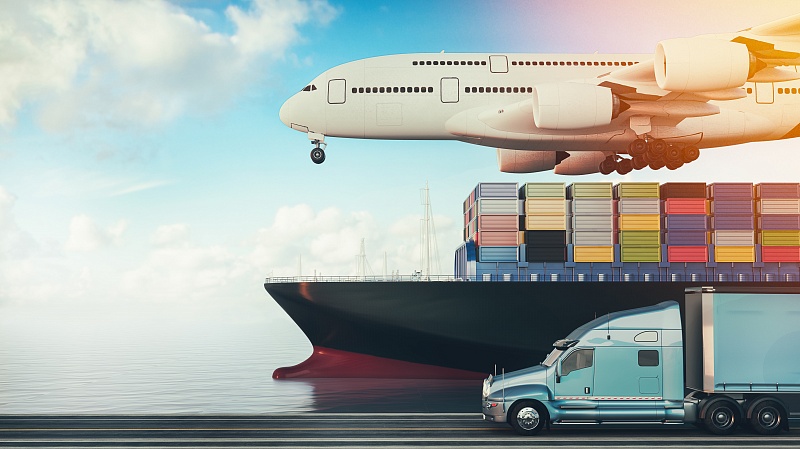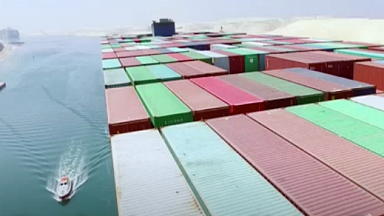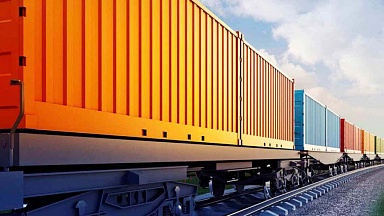Cargo owners are bearing most of the cost burden of the current congestion crisis that is affecting multiple container ports around the world – including loss of business as well as additional costs – with the ports themselves unlikely to suffer any significant long-term consequences, according to analysis by Drewry.
Ankush Kathuria, Lead Analyst at Drewry Maritime Financial Research, highlighted that shippers “generally bear the burden of inefficiencies within the supply chain”, noting that when they are aware of the inefficiency, they are better prepared. “But for inefficiencies caused by disruption – such as COVID-19 – shippers have to bear the indirect cost as well, such as loss of business due to late delivery and increased stock holding”, caused by longer or less-reliable service lead times.
Those indirect costs come in addition to container shipping lines passing on the cost of delays to shippers by adding a congestion surcharge to freight rates, while ports and hauliers pass on the cost in the form of higher demurrage charges and storage cost, he notes.
As for the causes, he indicates that there is a complex series of inter-connected reasons,m although each industry segment has its own justification or explantion of the causes.
“Shippers contest that the recent consolidation in the shipping industry has given unwarranted power to the big three shipping alliances, which virtually dominate 85% of the market share. Their respective capacity management efforts have led to the recent spike in container freight rates, which has stirred the regulators in many countries to closely watch the situation,” noted Kathuria.
Recently, the US Federal Maritime Commission (FMC) has intensified monitoring of shipping alliances, requiring them to provide carrier-specific trade data monthly rather than quarterly. This comes in conjunction with the regulators in South Korea and China, “which are already keeping an eagle eye on the situation”, Kathuria highlighted.
However, shipping lines claim that a number of factors have been involved, including rerouting or cancelling of port calls that have led by increased time to complete the round trip – in part due to quarantine measures opted by various ports worldwide. And while “the technique of positioning containers based on historical trends and future projections across ports works in the normal course, it has failed in the current stressed situation”, Kathuria noted.
“Ports, on the other hand, claim that with easing lockdown measures, volumes have picked up suddenly and they are doing their best to deal with the situation. While they believe it is a short-term phenomenon and expect normalcy to return soon, some ports have opted to increase their workforce, while others have introduced overtime to deal with the situation.
“Additionally, the capacity of inland transport and warehousing providers in each market is broadly fixed, and therefore, cannot be easily ramped-up to meet short-term fluctuations in demand.”
Blank sailings

What is driving congestion?
Drilling down further into what is driving congestion, Kathuria highlighted multiple reasons, including: tight capacity management and increased blank sailings by carriers; unexpected increase in demand; cost management tactics adopted by ports to combat the impact of COVID -19; ripple effect of congestions at nearby ports; and increased health measures adopted to safeguard against COVID-19 infections.
On the unexpected increase in demand, he notes three key factors including: the sudden spike in container volumes to meet the higher demand following the reopening of economies after lockdowns; the usual pick-up in demand before the holiday season; and front loading of orders by importers to safeguard themselves from any supply chain disruption that could be triggered by a second wave of infections – which has already become a reality in some parts of the world. This latter factor had particularly led to congestion at US ports such as Los Angeles and Long Beach.
“Ports are generally characterised by fixed capacity which cannot be changed or modified to meet the short-term requirements,” he noted.
Kathuria highlighted the situation of Felixstowe in the UK as an example of container ports deploying cost management strategies to save the bottom line from the COVID-19-led decline in revenue, noting that “these strategies have resulted in unwarranted consequences once the operating environment improved. In Felixstowe, the decision to let go the contract workers to lower the cost has left the port underprepared for a steep recovery in volumes that started in 3Q20 and has resulted in the current congestion at the port.
Ripple effect
The UK also provides an example of the “ripple effect of congestions at nearby ports”, with Kathuria noting that “the heavy congestion at Felixstowe has not only overburdened other ports in the UK (Southampton) but also ports of northern Europe (Rotterdam and Zeebrugge) as carriers have stopped calling Felixstowe and are instead unloading containers at nearby ports”.
Meanwhile, he noted that increased health measures adopted to safeguard against COVID-19 infections had also been a factor, highlighting several ports in China facing congestion as the country mandated COVID-19 checks, primarily to stop the spread of the infection.
Congestion at Colombo was also related to the impact of COVID-19 infections on resources.
On the effects more generally, he described congestion as a short-term problem with limited impact on the port industry’s valuation.
He noted: “Supply chains generally tend to be well orchestrated for moving goods across global networks. Any short-term disruption can lead to bottlenecks as is the case with port congestion these days. Port congestions are not new to the industry and have been handled in the past as well. Since ports are gateways for global trade, any bottleneck at ports will have a ripple effect across the maritime supply chain.”
In the impact on the port companies’ valuation, he noted:
“Port congestions are not new and have already been tackled in the past. They impact trade in the short term even though their wider impact can be felt by various industries. Therefore, we believe the current crises is also short term and should be resolved soon with limited impact on valuations. The recent uptrend in Drewry’s port index substantiates our claim.”
Stock price recovery
Indeed, Drewry’s port index indicates that the average stock price of ten port companies covered by Drewry has recovered to close to 90% of their value at the start of 2020.
Kathuria added: “Also, financial markets are already enjoying the flood of liquidity injected by the central bankers/governments, which instead of supporting the real economy, is actually making its way into various financial assets. We believe liquidity will continue to support the Port company valuations at least until the vaccines are fully available and governments continue to pump money into their respective economies.”





